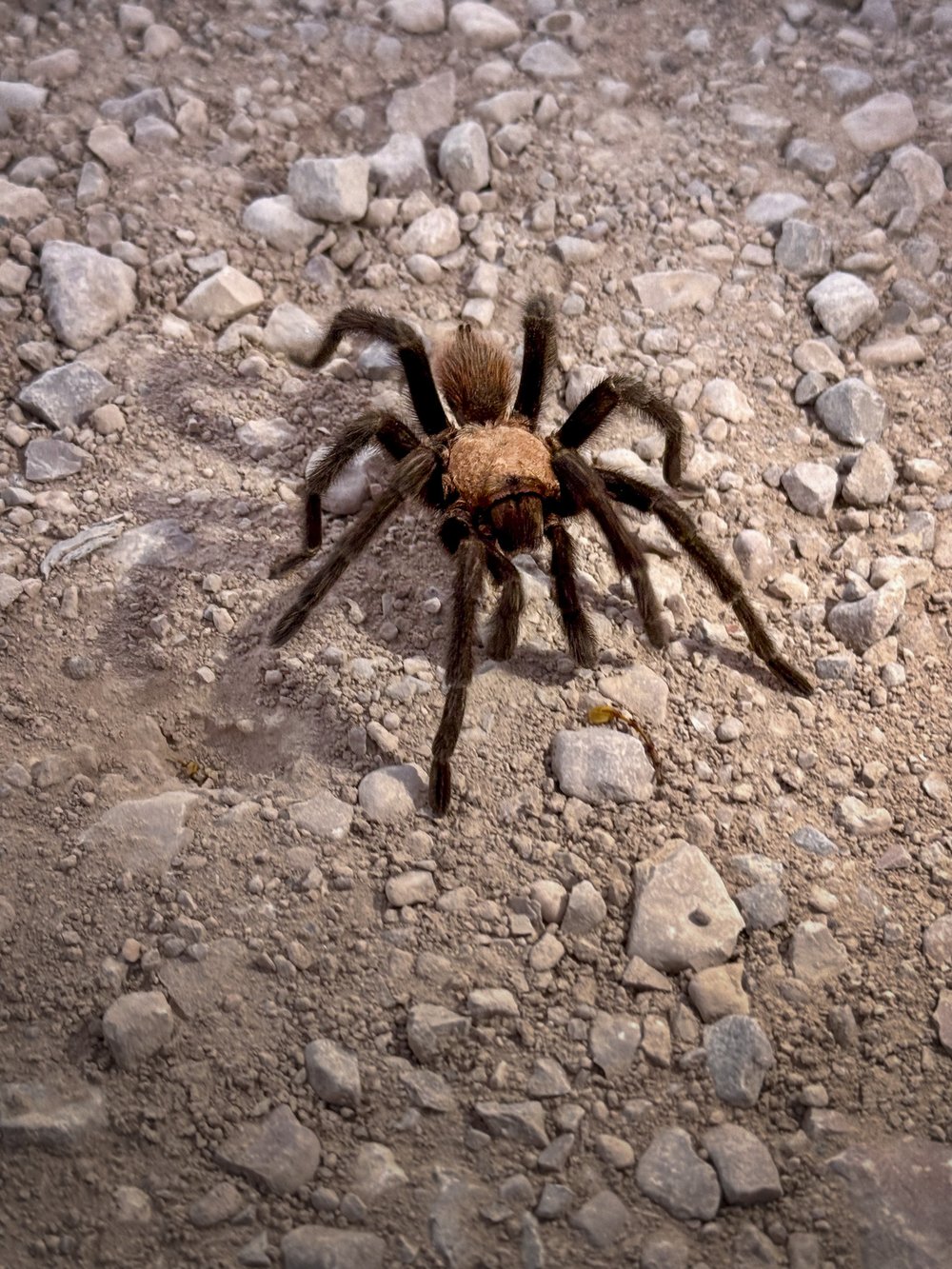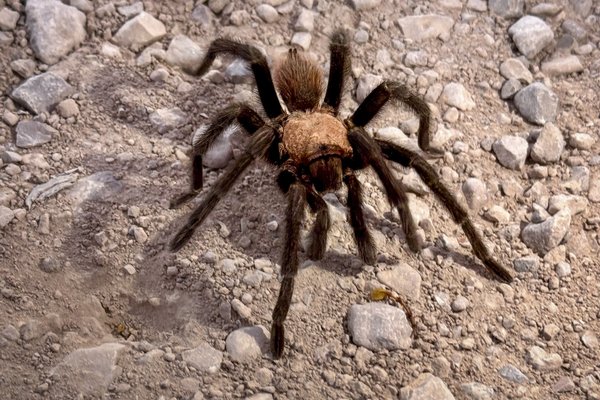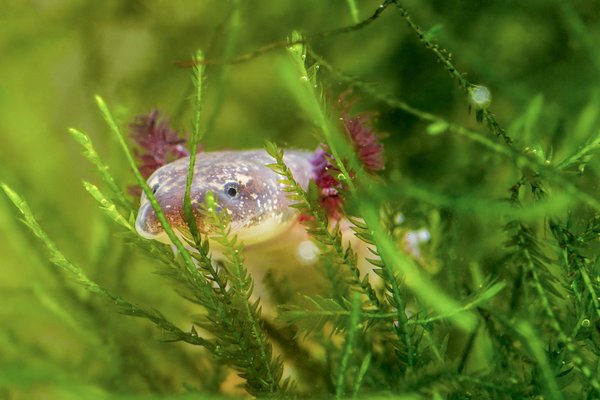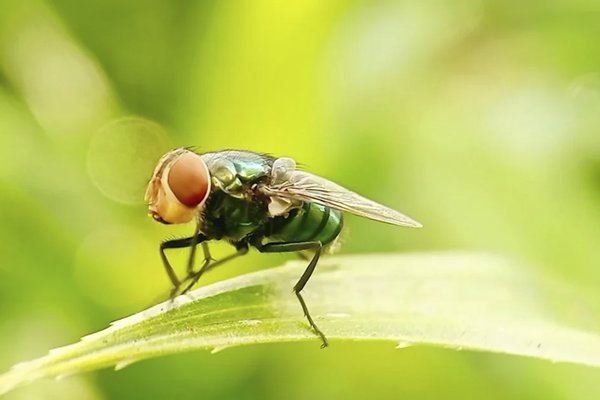The Texas brown tarantula, Aphonopelma hentzi, is the largest spider in Texas. They grow to about 3 to 4 inches wide and weigh up to 3 ounces.
“I just think they're fantastic,” says Wizzie Brown, an entomology expert at Texas A&M University. “I call them the gentle giants, because everybody gets freaked out by them, but they really don't do anything.”
If you spot one out and about, consider yourself lucky — their search for a mate lasts only a couple of months, usually between September and November (May to July is another active time). The rest of the year, the spiders spend their time burrowed in their underground dens awaiting their next meal.
They build their homes in dry, well-drained soil, using their fangs and front legs to move the dirt around. Sometimes they will reinforce their burrows with their silk, which they, unlike some spiders, don't use to spin webs or catch prey.
Tarantulas are nocturnal hunters and will run down their prey quickly, pouncing and piercing it with their fangs. After landing their meal, they inject the creature — typically a cricket, beetle or caterpillar — with a digestive fluid and slurp up the liquified remains. Despite their creepy, hairy look, Texas brown tarantulas are quite docile creatures. Some people even have them as pets (although don't let their furry bodies fool you — they aren't very cuddly).
Tarantulas are not likely to attack unless they feel severely threatened. When confronted with a predator, the tarantula can rub its abdomen, releasing small hairs that can cause irritation to skin, lungs and eyes. If that doesn't work, the tarantula will stand on its hind legs and show its fangs to intimidate its predator. If it must, a tarantula will bite. Their bite won't kill a human — unless they're allergic — but it can feel like a bee sting.
Tarantulas grow by molting, when they shed their exoskeletons to make room for larger ones. Like other arthropods, tarantulas must molt because their exoskeleton can't stretch. The spiders begin a molt by pushing fluid into their abdomen, breaking through weak spots in the exoskeleton. “It's almost like popping the top off a submarine,” Brown says.
Once the “seal” is broken, the tarantula will lie on its back or side to pull its body out of its old exoskeleton. The entire process is controlled by hormones that only arthropods have. Molting happens about once a month in young tarantulas and less frequently — about once a year or every two years — for older spiders.
To mate, male tarantulas wander around looking for females' burrows. When he comes across one, the male will tap on the entrance, alerting the female of his presence. If she is interested, she can come out and he will do a little dance to entice the female into mating. If at any point the female disapproves of the male's actions or simply decides he'd be better as a meal, she will eat her possible suitor.
Even if the male survives the encounter, he will die within the year after mating. Generally, males live seven to 10 years total. Female tarantulas often live longer than 20 years.
So, if you do happen to spot a tarantula this October, wish him luck in his perilous pursuit of love; it might be his last day on this Earth.
- Common Name
Texas brown tarantula
- Scientific name
Aphonopelma hentzi
- Habitat
Tarantulas can live in a variety of habitats, from grasslands and cotton fields to the Trans-Pecos desert.
- Diet
Insects and small vertebrates
- Did you know?
Tarantulas are both predators and prey; they are hunted by the tarantula hawk, Pepsis grossa, a huge wasp with eye-catching orange wings.









